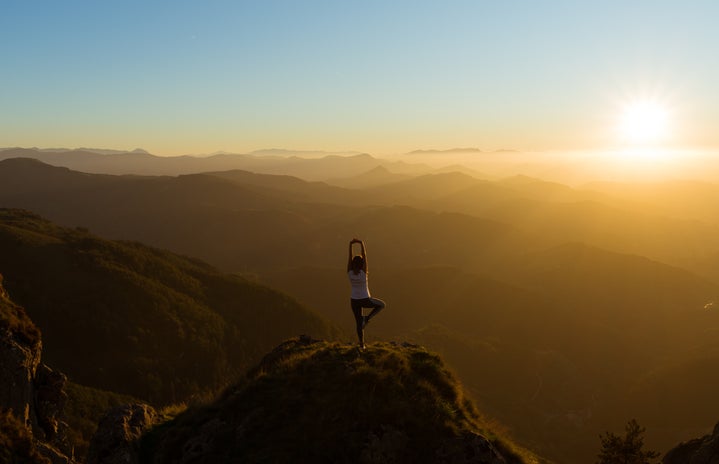Growing up, like most young girls, I had a skewed image of what a beautiful body looks like. In middle school, I was obsessed with looking like, or being as skinny as, the Victoria’s Secret Fashion Show models because they were the women en vogue at the time; they were all over social media and pop culture news. At the time I saw no representation on social media or elsewhere of anyone that was not over 5 foot 8 and incredibly skinny. For months I counted calories, obsessively returned to the mirror throughout the day to look at my body, and I was never satisfied with the way I looked; there was always something else that I wanted to change. My toxic relationship with my body eventually led to obsessively working out for the goal of becoming skinnier. Fortunately, with the rise in the representation of various body types on instagram, with yoga, and with dance, my relationship with exercise and with my body has changed.
I first started doing yoga at the beginning of the pandemic. When first getting started I was conscious of not giving into the white woman’s cultural appropriation of traditional yoga. In addition to being disrespectful to the ancient Indian tradition, the western version of yoga is also hyper-focused on looks, which would have only further worsened my view of my body. I did research on the best instructors on Youtube and eventually stumbled upon Deepika Mehta, a seasoned yoga practitioner and instructor. I began doing one of her videos each day.
While I recognize the benefits of yoga on my physical and mental health now, it was actually dance that transformed the way I look at health and beauty. A couple of months into the pandemic I also began doing Raqs Sharqi.** I would watch dance performances from around the world, as this style of dance is present on nearly every continent, and I would see confident and beautiful women of all sizes dancing. And similarly to yoga, I did research and found a dance teacher on Youtube, Leilah Isaac, and I began following her and doing her videos.
As time passed and as my confidence grew, a vital realization clicked in my brain: beauty ≠ being skinny. In addition, Raqs Sharqi, like any other dance form, is an active exercise and yet lots of the dancers were not skinny. This is when I also realized that health and size are not inherently related. I slowly began to understand the concept of different body types and how womens’ bodies innately looked different.
Dance also allowed me to see for the first time how a healthy relationship with exercise looks: moving in a way that is fun, doing an activity that is good for your body, and enriching your happiness. Anything else is not worth it. While there were in fact other factors that went into healing the relationship with my body, these two activities were certainly two of the most significant ones.
After understanding what a healthy relationship with one’s body looks like, mentally internalizing this took time. Putting this into practice is also easier said than done. Aspects of my previously toxic relationship with eating and exercise absolutely resurface from time to time. If I am not careful about impeding that toxic and hateful line of thinking when it occurs, I will still go down spirals of low self esteem. This has, however, significantly improved in the last several years and I am happy to say that I do not hate what I see when I look in the mirror any longer.
While social media has come a long way in terms of exposure to all body types, skinny bodies in this country are still seen as not only more beautiful, but more worthy. Through dance and yoga, I am grateful to have realized that size has nothing to do with your internal or external health. We are all born with bodies, it is our duty to take care of them in a healthy and loving manner; we should eat healthily, regularly move our bodies, and take care of our mental health. Our bodies deserve to be loved and respected entirely as they are.
**Raqs Sharqi is the authentic term for “belly dance.” The reason I did not use the term “belly dance” is because it is a generalized way to describe the dance that dissociates it from its historic and cultural significance.


